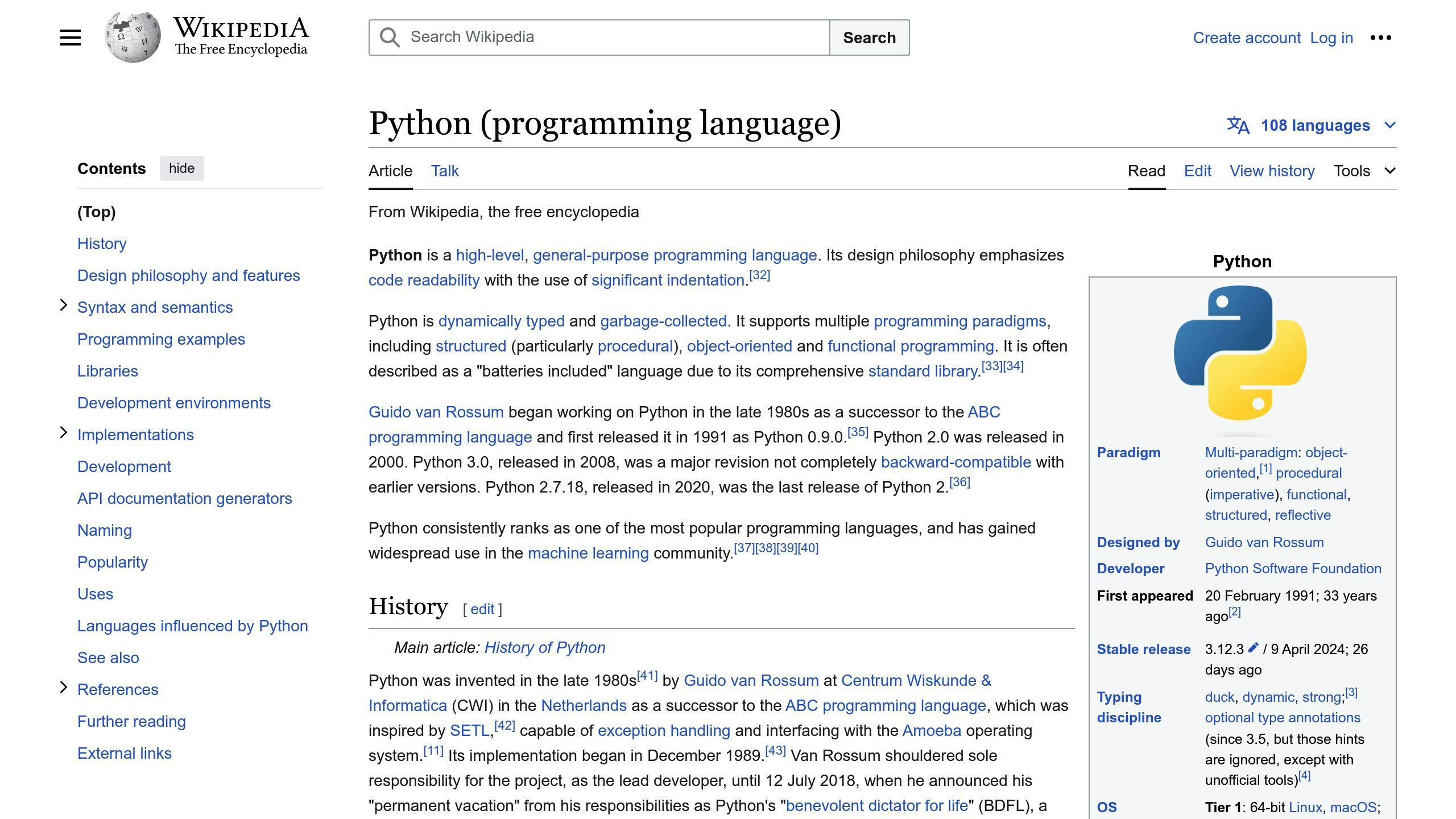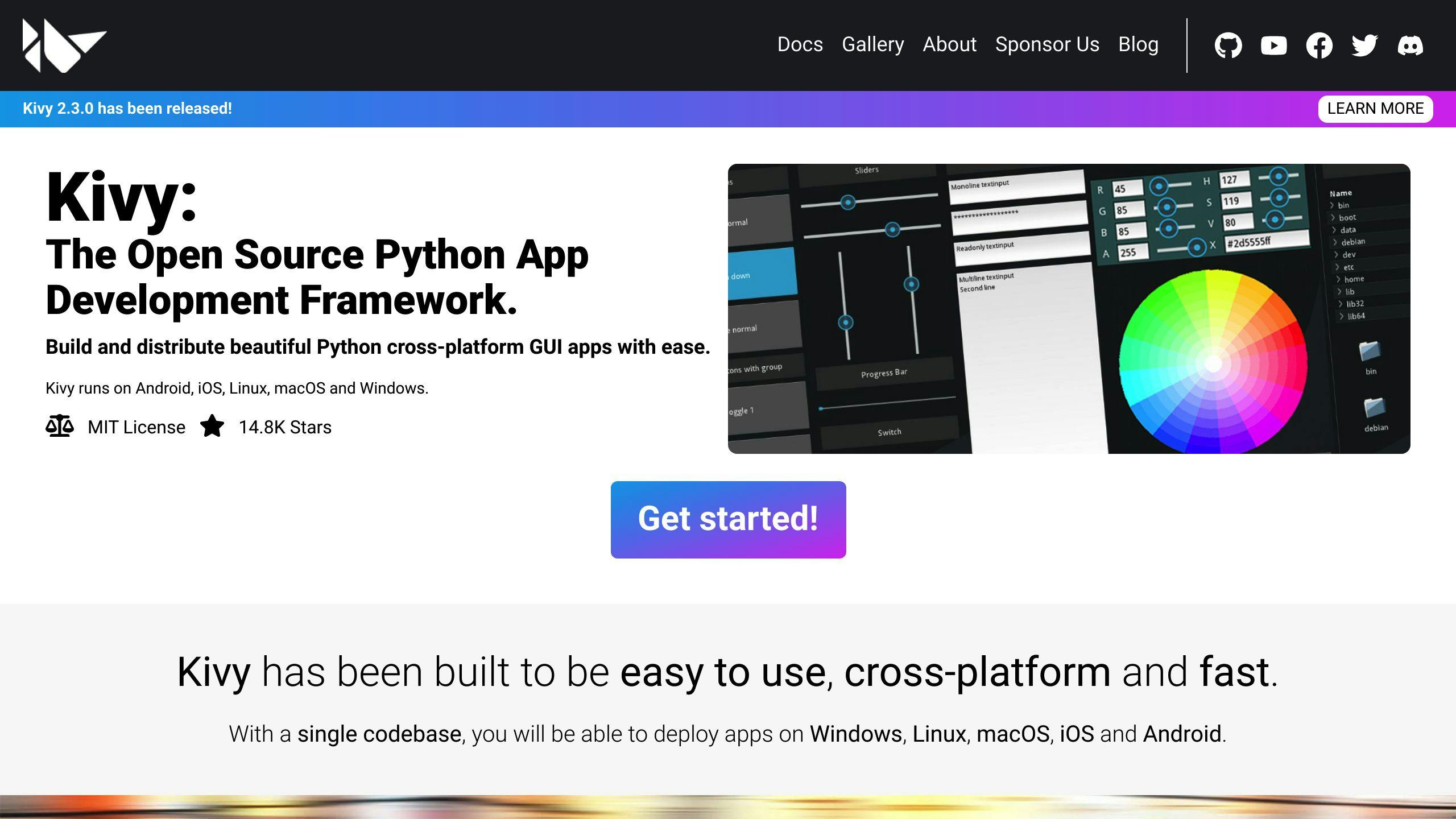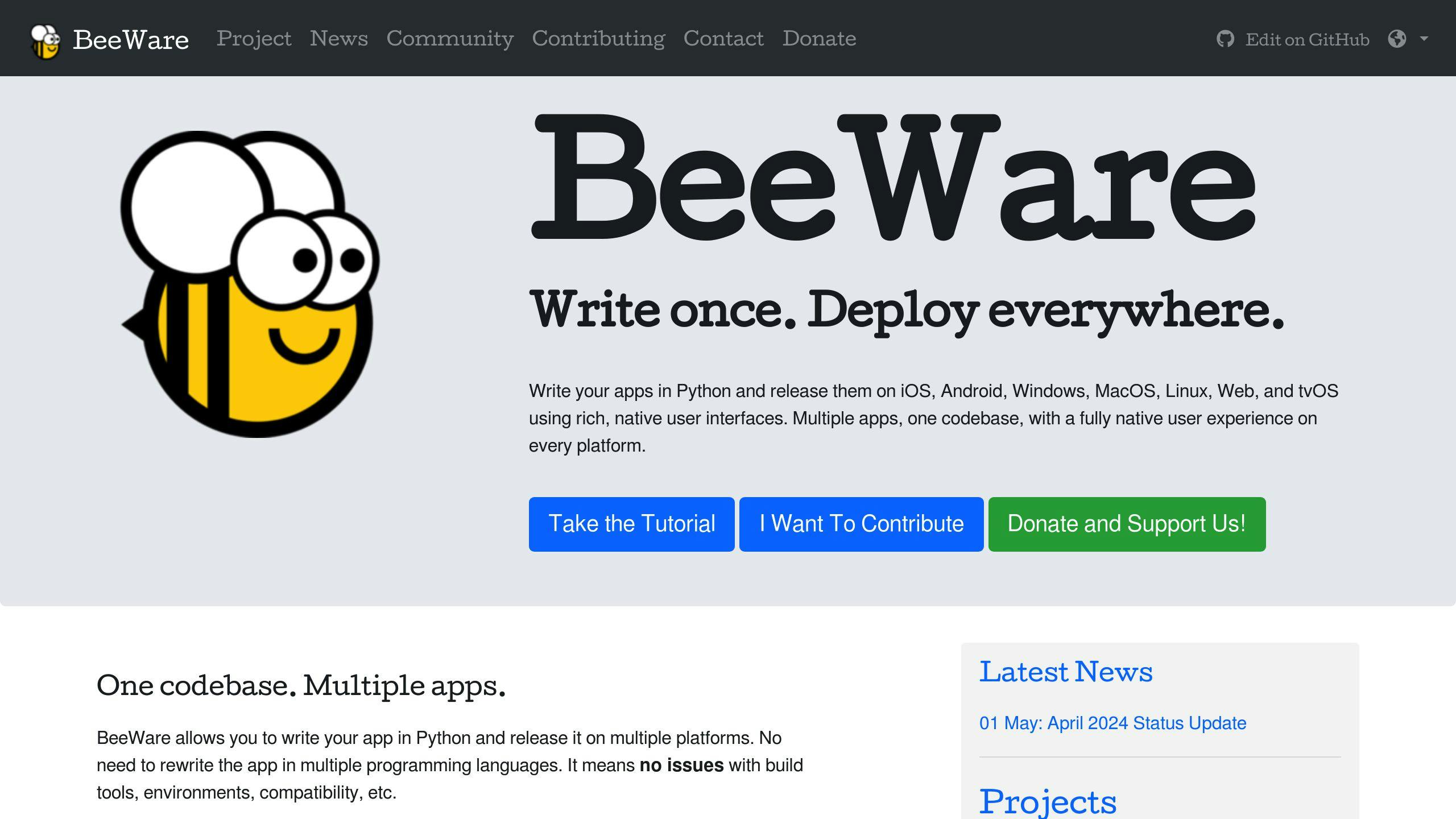Kivy and BeeWare are two popular Python frameworks for developing mobile apps. Here's a quick comparison:
AspectKivyBeeWareUI ComponentsCustom, non-nativeNative, platform-specificCross-PlatformYes, with limitationsYes, with full native supportGraphics EngineOpenGL ES 2Depends on platformDevelopment EaseSteeper learning curveEasier, more PythonicCommunityLarge, establishedGrowing, active
When to Choose Kivy:
- Need high customization and custom UI components
- Require fast GPU-accelerated graphics
- Okay with non-native UI and some platform limitations
When to Choose BeeWare:
- Want native UI components for Android and iOS
- Prefer a more Pythonic development experience
- Require full native platform support
- Have limited resources for development and maintenance
Ultimately, the choice depends on your project's requirements, development preferences, and long-term support needs. Kivy is ideal for complex, highly customized apps, while BeeWare is better suited for native apps with fewer resources.
What are Python Mobile App Frameworks?

Python has become a popular choice for mobile app development, allowing developers to create cross-platform applications. But what exactly are Python mobile app frameworks, and why are they important?
A Python mobile app framework is a set of tools, libraries, and structures that provide a foundation for building mobile applications using the Python programming language.
Key Benefits
Here are some key benefits of using Python mobile app frameworks:
BenefitDescriptionCross-platform compatibilityDevelop applications that can run on multiple platforms, including Android, iOS, and Windows.Rapid developmentPython's simplicity and flexibility make it ideal for rapid prototyping and development.Easy maintenancePython's syntax and nature make it easier to maintain and update applications.
Kivy and BeeWare are two popular Python mobile app frameworks that have gained significant traction in recent years. While they share some similarities, they also have distinct differences that make them suitable for different projects and use cases. In the following sections, we'll delve deeper into the features, advantages, and disadvantages of Kivy and BeeWare to help you make an informed decision for your mobile app project.
Kivy: An In-Depth Look

Kivy is a popular Python mobile app framework that allows developers to create cross-platform applications with a single codebase. In this section, we'll explore the features, advantages, and disadvantages of Kivy to help you make an informed decision for your mobile app project.
Key Features of Kivy
Kivy is known for its simplicity, speed, and native aesthetics. Here are some of its standout features:
FeatureDescriptionCross-platform compatibilityDevelop applications that can run on multiple platforms, including Android, iOS, Windows, and Linux.GPU-accelerated graphics engineFast and smooth graphics rendering.Extensive widget libraryWide range of customizable UI elements and widgets.Event-driven programmingDefine event handlers and respond to user interactions.MIT-licensedOpen-source and available for usage and modification under the MIT license.
Pros and Cons of Using Kivy
Here are the key benefits and drawbacks of using Kivy:
ProsConsEasy to useNon-native UIFast developmentLimited platform-specific featuresCustomizable
Real-World Kivy App Examples
Kivy has been successfully used in various industries and applications. Here are a few examples:
- Venture management app: A venture management app was developed using Kivy in a short time frame, showcasing its rapid development capabilities.
- Rock-paper-scissors game: A rock-paper-scissors game was developed using Kivy during a lockdown period, demonstrating its ease of use and accessibility.
These examples demonstrate Kivy's versatility and potential for developing a wide range of applications. In the next section, we'll explore BeeWare, another popular Python mobile app framework.
BeeWare: A Closer Look

BeeWare is another popular Python mobile app framework that enables developers to create native-looking applications with a single codebase. In this section, we'll explore BeeWare's capabilities, focusing on its features, advantages, and disadvantages.
Key Features of BeeWare
BeeWare is known for its native UI components, which provide a seamless user experience across various platforms. Here are some of its standout features:
FeatureDescriptionNative UI componentsUtilizes platform-specific UI elements for a native look and feel.Cross-platform compatibilityDevelop applications that can run on multiple platforms, including Android, iOS, Windows, and Linux.Toga and Briefcase toolsProvides specialized tools for building and packaging native applications.Open-source and community-drivenActive community support and contributions ensure the framework's continuous improvement.
Pros and Cons of Using BeeWare
Here are the key benefits and drawbacks of using BeeWare:
ProsConsNative UI experienceSteeper learning curve due to platform-specific components.Fast developmentLimited customization options for UI elements.Community support
Successful BeeWare Use Cases
BeeWare has been successfully used in various industries and applications. Here are a few examples:
- Podium: A markup-based slide presentation tool that uses BeeWare tools and libraries, notably Toga and Briefcase.
- Custom enterprise apps: Several companies have used BeeWare to develop custom native applications for their business needs, showcasing its versatility and potential.
These examples demonstrate BeeWare's capabilities and potential for developing a wide range of native applications.
sbb-itb-8abf120
Kivy vs. BeeWare: A Comparison
Feature Comparison
Here's a comparison of Kivy and BeeWare's key features:
FeatureKivyBeeWareUI ComponentsCustom, non-nativeNative, platform-specificCross-Platform CompatibilityYes, with some limitationsYes, with full native supportGraphics EngineOpenGL ES 2Depends on platformDevelopment EaseSteeper learning curveEasier to learn, more PythonicCommunity SupportLarge, established communityGrowing, active community
Community and Support
Both Kivy and BeeWare have dedicated communities and support systems. Kivy's community is larger and more established, with a wealth of resources available. BeeWare's community, while smaller, is growing rapidly and is known for its responsiveness and helpfulness.
Suitable Use Cases
Here's when to choose each framework:
- Kivy: Ideal for applications that require custom, non-native UI components, fast GPU-accelerated graphics, and cross-platform compatibility with some limitations.
- BeeWare: Suitable for applications that require native, platform-specific UI components, full native support for Android and iOS, and a more Pythonic development experience.
Pros and Cons Table
Here's a concise table outlining the pros and cons of each framework:
FrameworkProsConsKivyFast GPU-accelerated graphics, Custom UI components, Large communitySteeper learning curve, Non-native UI components, Limited native supportBeeWareNative UI components, Full native support, Easier to learn, Growing communityLimited customization options, Smaller community
By understanding the features, communities, and use cases of Kivy and BeeWare, you can make an informed decision about which framework best suits your project needs.
Choosing the Right Framework
When deciding between Kivy and BeeWare for your Python mobile app development project, consider the following factors:
Project Requirements
Project AspectKivyBeeWareCustomizationHigh degree of customization possibleLimited customization optionsNative SupportLimited native supportFull native support for Android and iOSResourcesMore resources required for development and maintenanceFewer resources required for development and maintenance
Development Ease
Development AspectKivyBeeWareLearning CurveSteeper learning curveEasier to learnDevelopment ExperienceCustom UI components and graphics engineMore Pythonic development experience
Long-Term Support
Support AspectKivyBeeWareCommunity SizeLarger, established communitySmaller, growing communitySupport ResourcesMore resources availableFewer resources available
By evaluating these factors, you can make an informed decision about which framework best suits your project needs.
Remember to consider the following:
- The complexity and scope of your project
- The ease of development and learning curve
- The level of long-term support and maintenance required
By carefully weighing these factors, you can choose the right framework for your Python mobile app development project.
Conclusion
In conclusion, Kivy and BeeWare are two powerful Python mobile app frameworks that offer unique advantages and disadvantages. When choosing between the two, it's essential to consider the project's requirements, development ease, and long-term support.
Choosing the Right Framework
Here's a summary of when to choose each framework:
FrameworkIdeal ForKivyProjects that require a high degree of customization, a custom UI, and a robust graphics engine.BeeWareProjects that require native support, a Pythonic development experience, and fewer resources for development and maintenance.
Key Takeaways
- Kivy is suitable for complex projects that require a high degree of customization and a robust graphics engine.
- BeeWare is perfect for projects that prioritize native support and ease of development.
- The choice between Kivy and BeeWare depends on your project's goals, preferences, and requirements.
By understanding the strengths and weaknesses of each framework, you can make an informed decision about which tool is best for your Python mobile app development project. Remember to consider the project's requirements, development ease, and long-term support to ensure the success of your project.
FAQs
Is Kivy worth using?
Kivy is a great choice if you're comfortable with a non-native UI toolkit in your apps. It allows you to write mobile applications using your Python programming skills without having to learn another platform-specific language.
Here are some key points to consider:
ProsConsWrite mobile apps using PythonNon-native UI toolkitNo need to learn another language
Ultimately, whether Kivy is worth using depends on your project's specific needs and your personal preferences as a developer.



.png)





